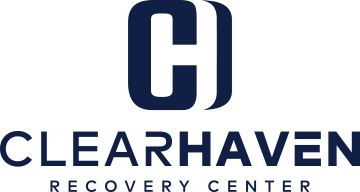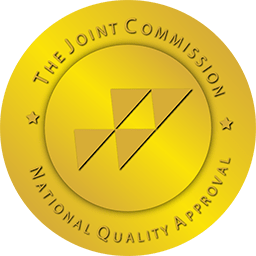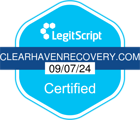Substance abuse screening plays a vital role in various settings, including healthcare facilities, workplaces, and educational institutions. By identifying individuals who may be struggling with substance abuse, screening enables early intervention and treatment. This not only helps the individuals themselves but also contributes to the overall wellbeing of society. Substance abuse can lead to a range of physical, psychological, and social problems. Through screening, we can identify those at risk, provide appropriate support, and ultimately reduce the burden on healthcare systems and communities.
Common Tools Used for Substance Abuse Screening
Numerous tools are available for substance abuse screening, each with its own advantages and limitations. Some of the commonly used tools include questionnaires, urine tests, and breathalyzer tests. Questionnaires, such as the AUDIT (Alcohol Use Disorders Identification Test) and DAST (Drug Abuse Screening Test), assess an individual’s substance use and related problems. Urine tests can detect the presence of drugs or their metabolites in a person’s system, providing objective evidence of substance abuse. Breathalyzer tests, primarily used for alcohol screening, measure the alcohol concentration in an individual’s breath. These tools, among others, offer valuable insights into an individual’s substance use and help guide further assessment and treatment.
Understanding the Most Common Tool for Substance Abuse Screening
Among the various tools available for substance abuse screening, one stands out as the most commonly used: the 5-Panel Drug Test. This test screens for the five most commonly abused substances: cocaine, marijuana, amphetamines, opiates, and phencyclidine (PCP). The 5-Panel Drug Test is widely employed in healthcare, workplace, and legal settings due to its simplicity, cost-effectiveness, and accuracy. Understanding how this tool works is essential for healthcare professionals and individuals involved in substance abuse screening.
How the Most Common Tool Works
The 5-Panel Drug Test detects the presence of specific substances in a person’s urine sample. The test utilizes immunoassay technology, which involves the interaction between antibodies and the targeted drugs or their metabolites. When a urine sample is added to the test device, it migrates through the test strip, which contains specific antibodies. If the targeted substances are present in the urine, they bind to the corresponding antibodies, resulting in a visible line on the test strip. The absence of a line indicates the absence of the targeted substances. The 5-Panel Drug Test provides rapid results, typically within a few minutes, making it a practical and efficient tool for substance abuse screening.
Benefits of Using the Most Common Tool for Substance Abuse Screening
The 5-Panel Drug Test offers several benefits that contribute to its widespread use in substance abuse screening. Firstly, it provides a quick and reliable method for detecting the five most commonly abused substances. This allows for early identification and intervention, enabling individuals to receive timely treatment. Additionally, the simplicity and ease of use of the 5-Panel Drug Test make it accessible to a wide range of healthcare professionals and testing facilities. Furthermore, the cost-effectiveness of the test makes it a viable option for regular screening in various settings. Overall, the benefits of using the 5-Panel Drug Test make it an invaluable tool in the fight against substance abuse.
Limitations and Considerations of the Most Common Tool
While the 5-Panel Drug Test offers numerous advantages, it is important to recognize its limitations and consider certain factors when utilizing this tool for substance abuse screening. Firstly, it is important to note that the 5-Panel Drug Test only screens for the five specific substances mentioned earlier. It does not detect other drugs or substances that may be abused. Therefore, additional testing may be necessary in certain situations. It is also crucial to consider the potential for false-positive or false-negative results, which can occur due to various factors such as medication use or adulteration of the urine sample. Finally, it is essential to adhere to proper testing protocols and ensure appropriate training and certification to maintain the accuracy and reliability of the 5-Panel Drug Test.
Integrating the Most Common Tool into Substance Abuse Screening Protocols
To effectively integrate the 5-Panel Drug Test into substance abuse screening protocols, certain considerations should be taken into account. Firstly, clear guidelines and procedures should be established to ensure proper sample collection, handling, and testing. This includes maintaining the integrity of the urine sample and following standardized protocols to minimize errors. Additionally, healthcare professionals involved in substance abuse screening should receive comprehensive training on the proper administration and interpretation of the 5-Panel Drug Test. Regular quality control measures should also be implemented to monitor the accuracy and reliability of the testing process. By integrating the most common tool into substance abuse screening protocols, we can enhance the effectiveness and efficiency of the screening process.
Training and Certification for Using the Most Common Tool
To ensure the accurate and reliable use of the 5-Panel Drug Test, healthcare professionals and individuals involved in substance abuse screening should undergo training and certification. Training programs should cover various aspects, including the principles of substance abuse screening, the proper administration of the 5-Panel Drug Test, interpretation of results, and considerations for follow-up assessment and treatment. Certification serves as a validation of the individual’s knowledge and skills in using the tool. By establishing training and certification programs, we can enhance the professionalism and standardization of substance abuse screening practices.
Conclusion
Substance abuse screening is a vital component of early intervention and treatment for individuals struggling with substance abuse. The 5-Panel Drug Test stands as the most commonly used tool due to its simplicity, cost-effectiveness, and accuracy in detecting the five most commonly abused substances. By understanding how this tool works and considering its limitations and considerations, healthcare professionals can effectively integrate it into substance abuse screening protocols. Training and certification programs further ensure the accurate and reliable use of the 5-Panel Drug Test. By utilizing the most common tool in substance abuse screening, we can make significant strides in identifying and addressing substance abuse, ultimately leading to healthier individuals and communities. Contact us today at 833.970.2054.











